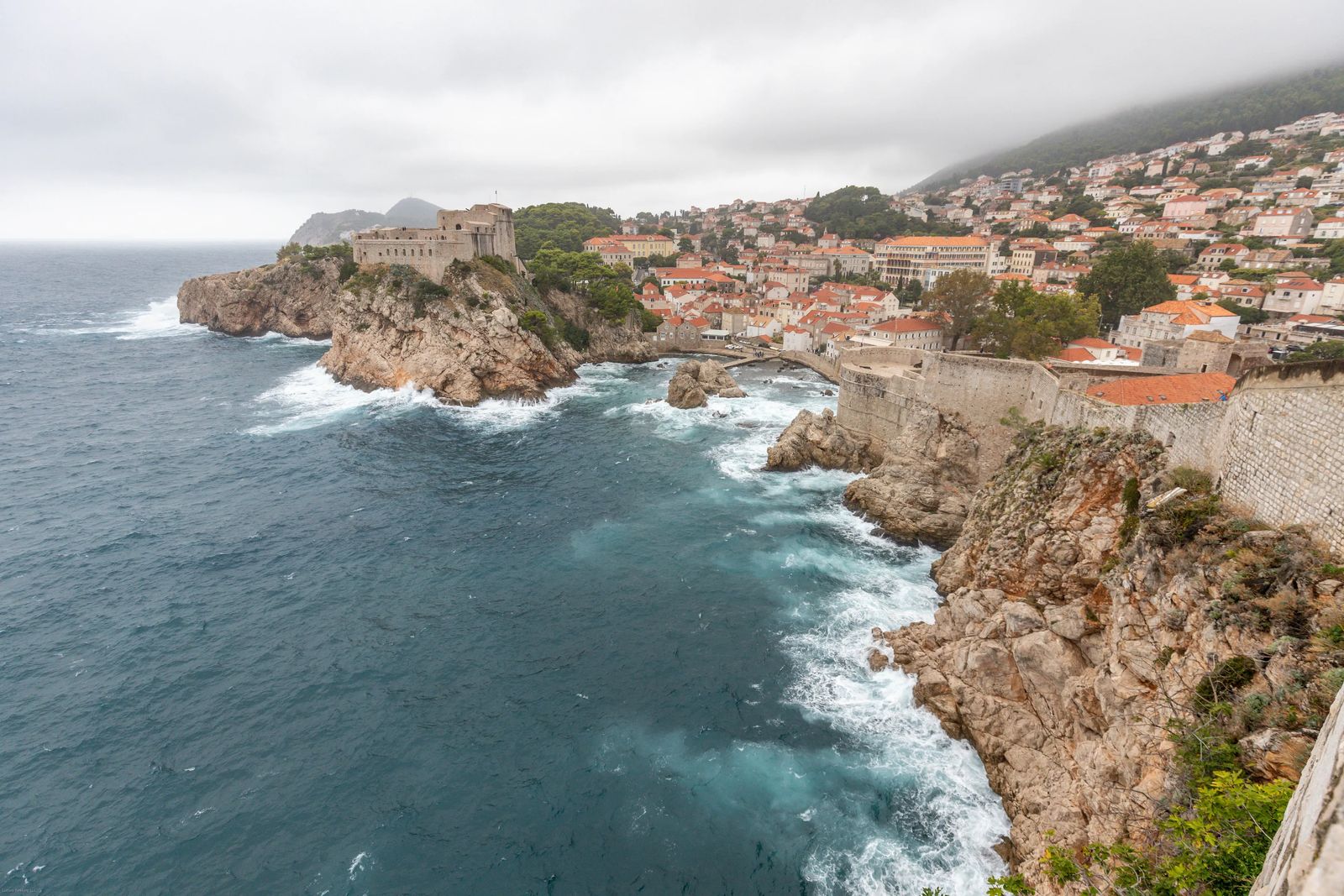
The Ultimate Dubrovnik City Walls Self-Guided Tour
Dubrovnik City Walls are the reason Dubrovnik was named a UNESCO heritage site and are so perfectly preserved. There are many medieval fortresses throughout the world that have unique histories certainly, but very few have such stunning views, unique cafes, hidden areas within them that house museums, statues, shops and more like the City Walls of Dubrovnik.
When you get on the walls it can be a little disorienting, and knowing exactly what fort is what, why it was important etc... In this self guided tour to the Dubrovnik City Walls I will take you through each fortress, unique features of the walls, where and when to visit, how to save money on tickets, how to prepare yourself to visit the walls and more.
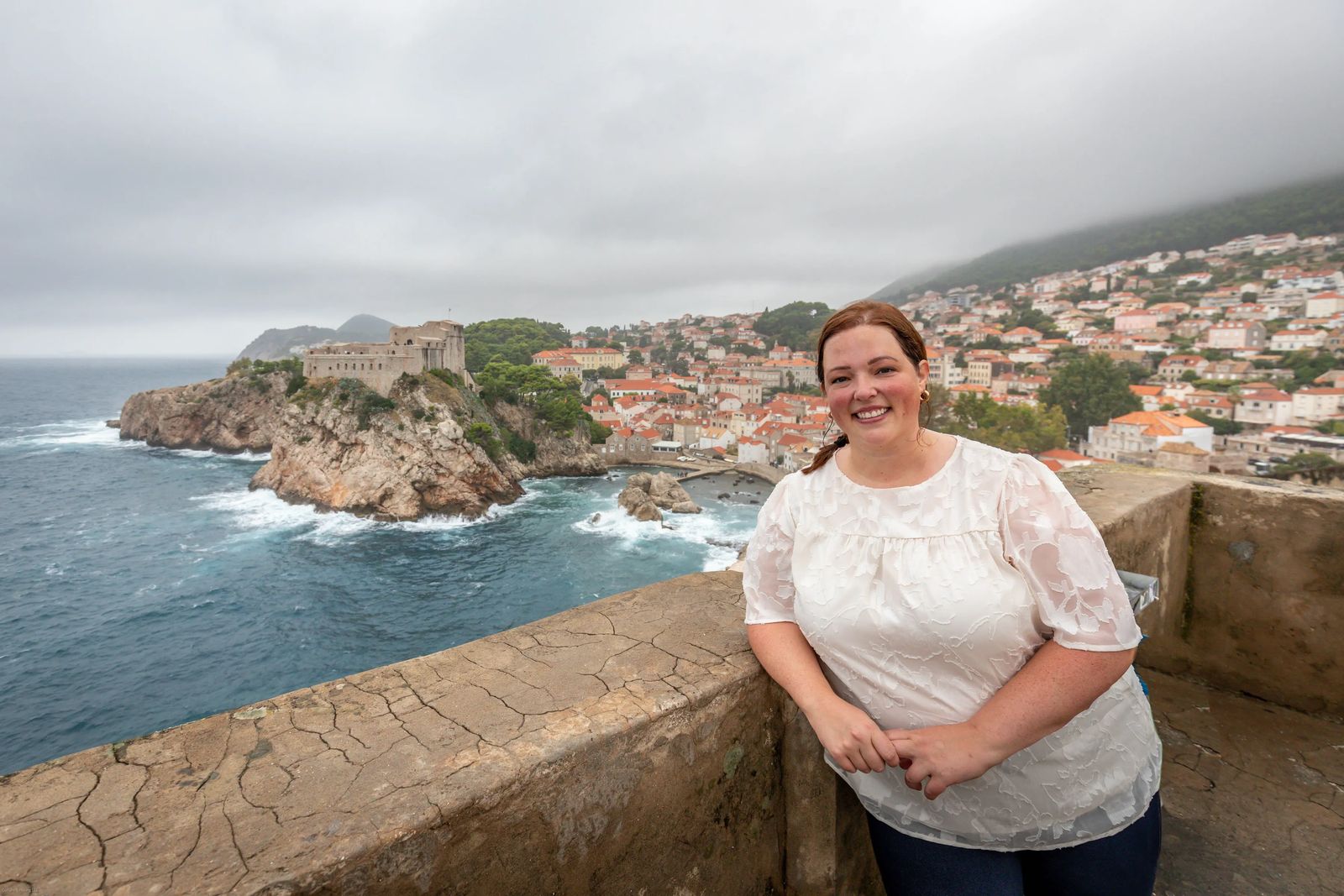
Quick itinerary/Key Takeaways
This is a self guided tour of the incredibly well preserved city walls of Dubrovnik, with each stop along the way starting from Pile Gate. In this article I will address bathrooms, cafes, tickets, safety and more.
Attractions along the wall we will discuss starting from Pile Gate:
- Pile Gate
- Fort Bokar
- Loverjenk Fortress
- Fort St Peter
- Cafe Buze and Blaze Beach
- Fort St Margaret
- Fort Stephen
- Fort Spasitelji
- Fort St Ivana (Mulo Tower)
- Cathedral of Assumption
- Rectors Palace, Sponza Palace, and Church of St Blaise
- Kula Luda (Sveta Luda), Sveta Jokov
- Dominican Monastery
- Buza Gate
- Sveta Vld, Sveta Lucija, Saint Barbara Tower
- Minceta Tower
- Francis Tower
Getting Your Tickets
I would suggest buying your ticket through the Dubrovnik Pass online before your visit. Especially if you are planning on visiting the Franciscan Monastery/Pharmacy, the Ethnographic Museum and more as these are included in the price. The Dubrovnik Pass comes in one day, three day, and seven day increments and includes the use of buses as well. It does NOT include the cable car up Mount Srd though so keep that in mind. Check out my article for a full list of things to do and see in Dubrovnik.
Don't buy your tickets from third party vendors promising that you can skip the line. Their offices often open about 30 min to 1 hour after the walls open, and are located across the city where you have to pick the tickets up.
If you are unsure about wanting to walk the walls on your own or do things last minute, then you can also pick the tickets up near Pile Gate. Pile Gate is also where you can enter the walls as well.

Rules On Walking The Walls
There are three entrances to the city walls, one at Pile Gate, one at Ploce Gate (near Dominican Monastery), and one near the Maritime Museum (by Fort St. John). Walking the walls can take anywhere from 45 minutes to three hours, it depends on how fast you can climb the stairs, and how long you want to wait in line for the more epic photo spots.
The walk goes in a counterclockwise way around the wall and you cannot go backwards (mostly because it makes it way to hard to pass other people on the narrow walkway.
There is no shade on the walls once you are up there, other than in the tower areas. Make sure to bring a hat and sunscreen. There are a lot of steep steps folks, to the top of Minceta tower alone it is about 750 steps and to get up onto the walls it is about 45 steep and exposed steps with one railing. The walk around the walls is around 1.2 miles (1940m) long.
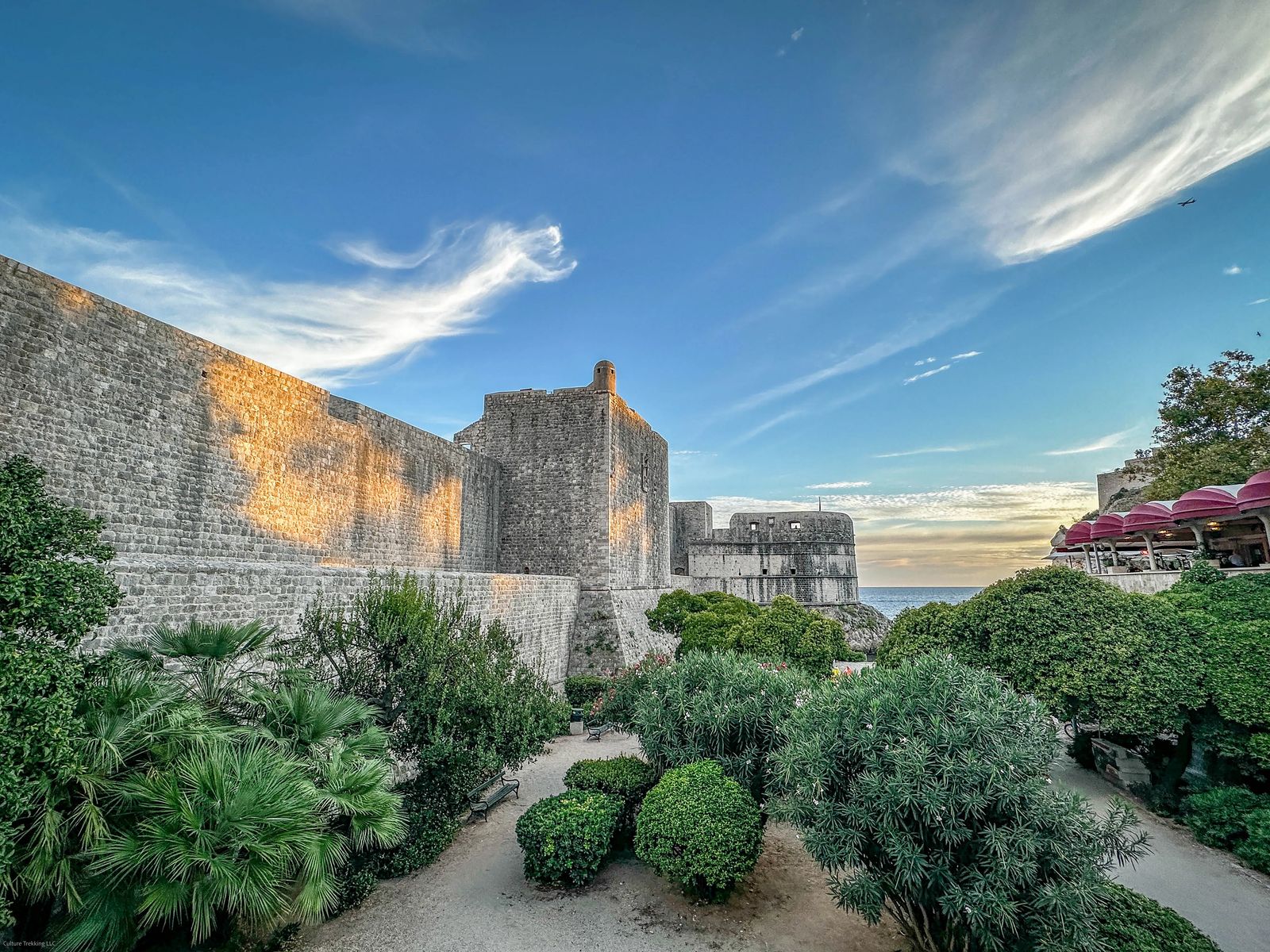
History of the Walls of Dubrovnik
The Northern Wall of the city is the highest to defend against the nearby Slavs. The western wall included the western part of the rock overlooking the bay. From the Castellum the additional portions of the city included Saint Peter and Pustijerna with the St Blaise church greeting those who crossed the bridge to Dubrovnik, and a lookout tower added in 972 on the mainland looking towards Srdj Mountain that rose 1,400 feet into the air at the time.
In the last part of the thirteenth century the thirty years of building the walls of Dubrovnik, only parts of the wall survive today from that time period, but the walls you see today resemble them as they would have been built (except for the Eastern part).
The Puncijela tower was built on the western wall in 1305 (where Pile Gate is, the main entrance to the city), the next tower to be built was fortress Minceta on the Northwest corner. On the Northern side of town, you will find Saint Luke's tower near the harbor. On the Southern side of town, you find Saint John's Tower. The walls are five feet thick and at the end of the 14th century, there were thirteen towers.
When the Venetians left Dubrovnik in the 14th century all but four gates were walled up, and there are three that were left open and are still used today. The main gate is Pile Gate, the Eastern gate is Ploče Gate, and the harbor gate and Ponta gate.
In the 15th century, the walls expanded to be 16-20 feet deep and 65-80 feet high. The walls run about 6,365 feet in length (1,940 m). Between the high walls and diplomacy and tributes, these are what guaranteed Dubrovnik its freedom and independence. Much of the construction that has lasted to today is attributed to Italian architect Onofrio de la Cava, Florentine architect Michelozzo Michelozzi, and Juraj Dalmatinac.
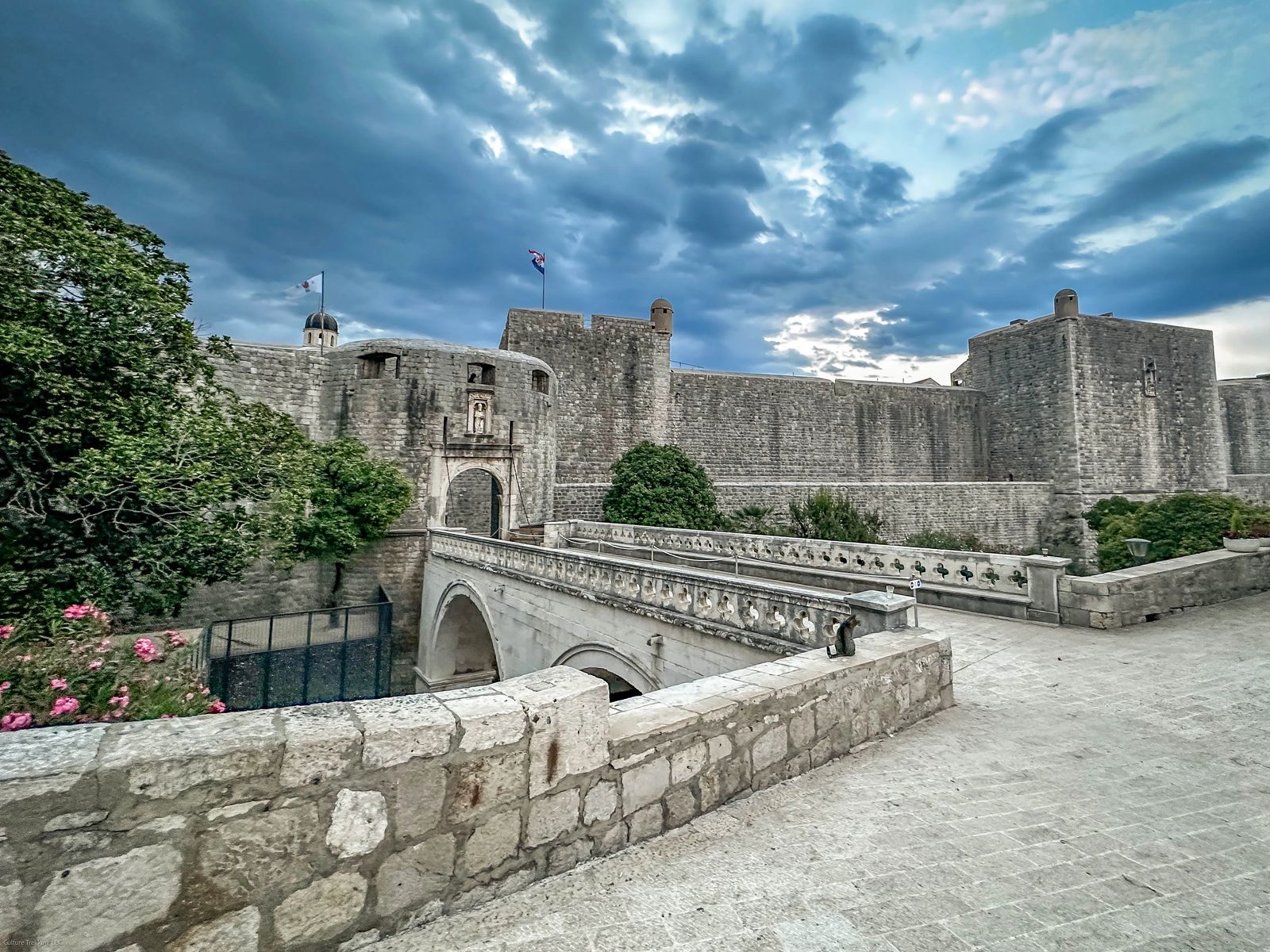
Starting at Pile Gate
Pile gate (Greek for pjlaj or gate) is the main gate into the city of Dubrovnik. Prior to the 15th century a wooden drawbridge was raised at night to prevent people from entering. Those unwanted guests were often the Ottomans and the Hungarians who were stationed just on the other side of Mount Srd.
Right above the gate you will find the Patron Saint of Dubrovnik, Saint Blaise. Next to the entrance you will also find a UNESCO sign as well as a map of the city and etiquette when visiting as the streets are narrow, and this is home to many people who take great pride in their city.
Once you go through the outer Gothic gate, you enter the city through a smaller second gate (1460) that spits you out onto the main thoroughfare for Dubrovnik, the Stradun, or main walkway. This placa, or main walkway was once a channel the separated the city of Ragusa (aka Dubrovnik) from the mainland which is how it was protected from the Slavs originally. As the city expanded in the 13th and 14th century, the channel was filled in and the walls were built.
It is just adjacent to Pile gate and the visitors center that you can buy your tickets if you choose to not use the Dubrovnik Pass, as well where you will enter the city wall walk via a steep staircase to the top. Then make your way around the walls in a counterclockwise fashion.
Pile gate was also used as a filming location during the popular TV series on HBO called Game of Thrones.
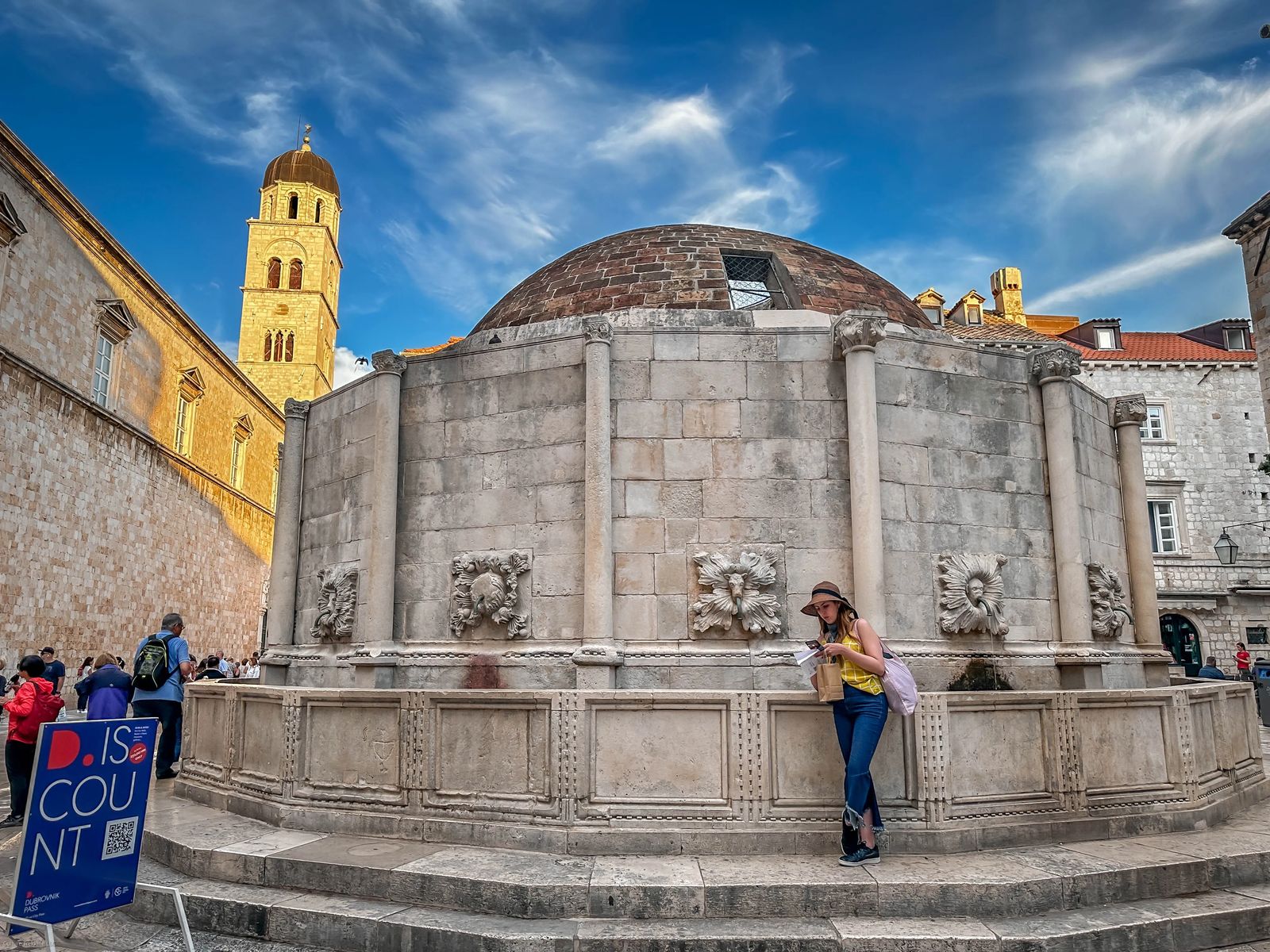
Onufri Fountain
Before heading up onto the walls, fill your water bottle from the Onufri fountain right near Pile Gate. One of the most important things during a siege is access to fresh water, as well as access to food.
Initially the fountain was supplied by cisterns that collected rainwater from a large building roof. The building was called spongia, and today is called Sponza Palace.
Onufri fountain and the knowledge of Roman aqueducts (from the Roman refugees that fled here) allowed Dubrovnik to allow of free fall of fresh water into the city. The water travels over 7 miles into the city. When being built, it was stipulated that any drop of water lost during the transport, the architects would be charged for - so the build was flawless.
There are 16 sides to the fountain with different masks for each side the have a spout coming out of it. Originally there was a dragon on the top of the fountain, but it was destroyed in 1667 and never replaced.
This constant supply of water allowed the people of Dubrovnik to resist a 15 month siege by the Arabs from southern Italy TWICE. Dubrovnik also survived a 7 month siege by Yugoslavian forces in the 1990s.
So as you fill up your water bottles, think about how you are standing in a place that allowed survival of this ancient city by a simple thing we take for granted - fresh clean water.
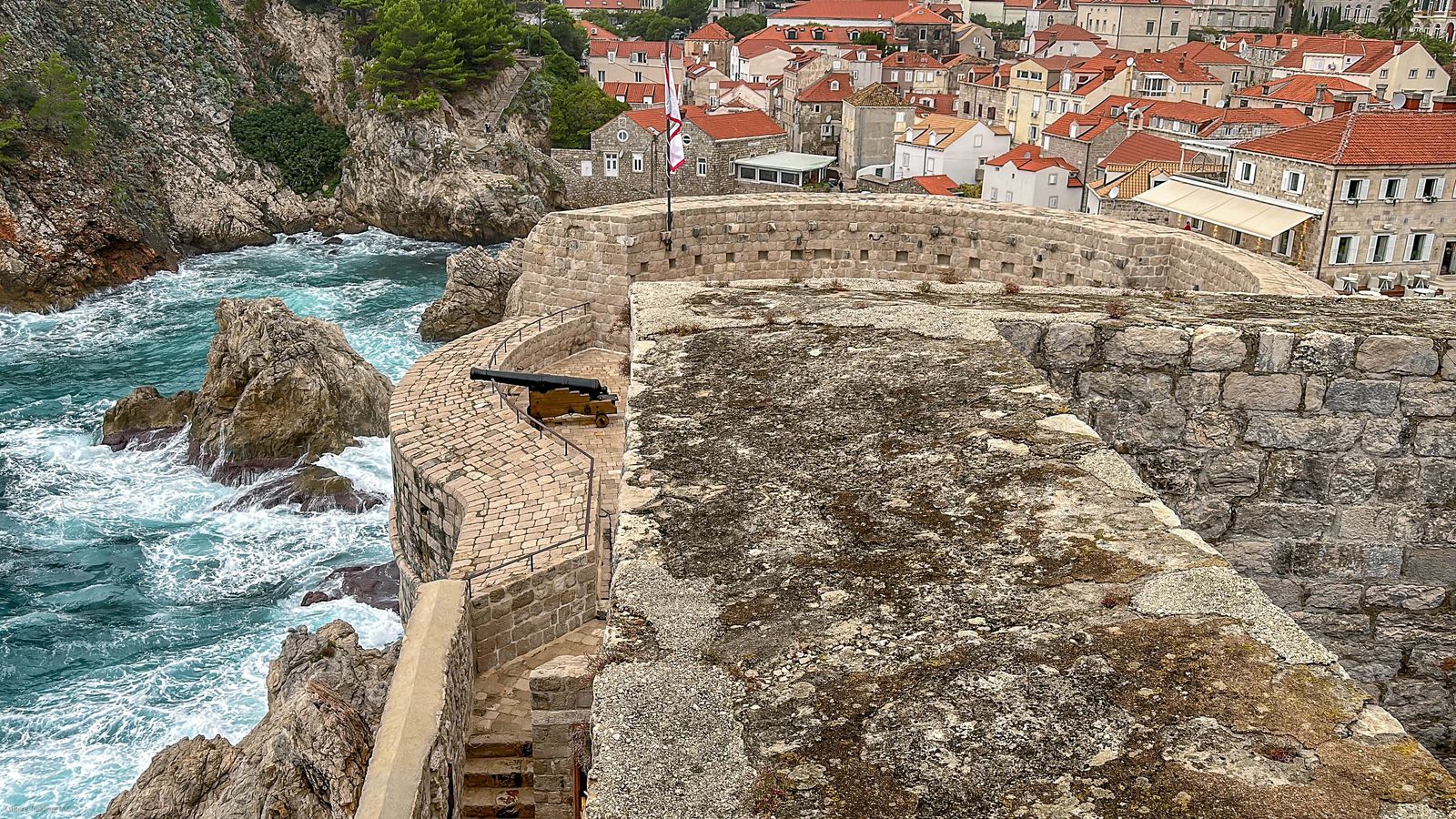
Fort Bokar
As you make your way to the first tower or fort you get a good view of just how massive the city walls are. This is considered to be in the south-western side of the city walls. It was Fort Bokar and Minceta tower that were the key points for defense against the armies from the land that wanted to overtake Dubrovnik.
The fortress was built by Michelozzo de Bartololmeo (Italian) to defend Pile Gate. There was quite a bit of debate as to weather the fortress was to be finished, but eventually was finished in 1570. It was often called 'Zvjezdan' a Serbo-Croat word meaning 'starry' as you can get fabulous views of the stars from this tower.
Part of the tower is built on a detached rock from the rest of the city, and arches were used to bridge the gap and provide stability. The water still passes underneath the fortress today.
Fort Bokar is also used as the location for summer festivals because of the ease of use and platform in creates for festival goers. It is fascinating to me to see the medieval meet modern in a way that despite thousands of years and advancement - the structures are still functional.
This fortress was also seen in Game of Thrones in season two and three when Varys tells Tyrion he is good at being hand of the king.

Fort Lovrijenac
Lovrijenac Fortress is one of the most fascinating stories of the fortifications of Dubrovnik. Standing at 131 feet (40 m) above the sea this fortress was built when the citizens of Dubrovnik caught wind (in the 11th century) that the Venetians were going to build a fortress on these rocks as a way to control the city more tightly.
Because there was a law in Dubrovnik that encouraged each citizen to be an ambassador of protection for the city, they all came together to build a fortress of their own. With every citizen helping for the good of everyone, the fortress was built within 3 months.
The walls are defended by ten cannons with the inscription above the entrance to the fortress reading "Non Bene Pro Toto Libertas Venditur Auro" - "Freedom cannot be sold for all the gold of the world".
If you are in Dubrovnik in the summertime, and have a little more time in the city, they do hold performances of Hamlet and others here. This was also where Game of Thrones digitally placed the Red Keep, or the main castle featured in the films.
Fort Peter (Kula Sv Peter)
This section of the wall points out towards the sea, there is a refreshing cafe here where you can grab a small selection of drinks at. The views are stunning no matter which area along the southern wall you stop at. This tower was instrumental in helping to defend Lovrijenac fortress from sea-faring enemies and was a great lookout point for ships coming into the west harbor.
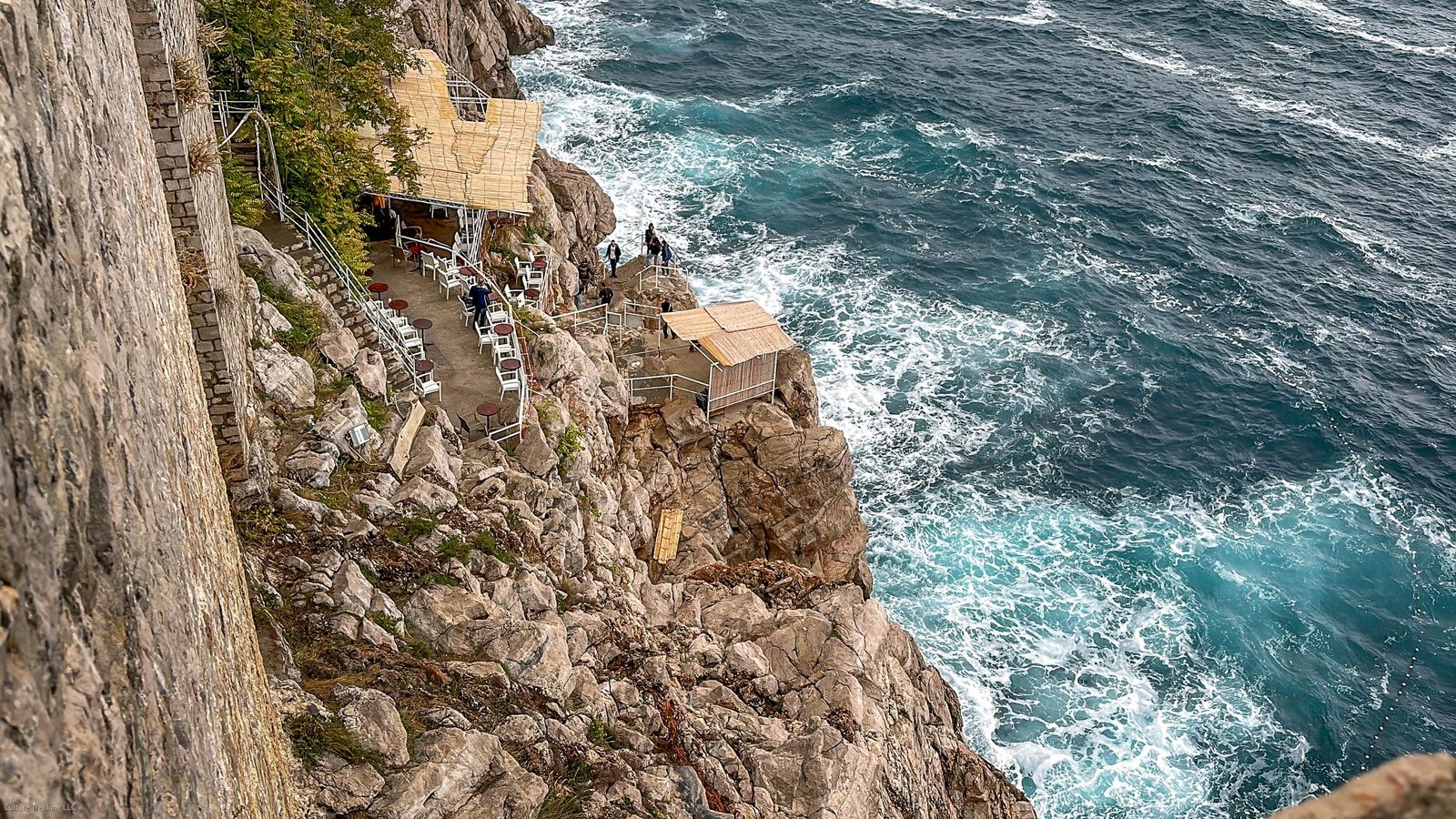
Cafes On The Wall
There is a small cafe at Fort St. Peter which is about 15 minutes into the walk along the wall. The next Cafe is Buza Cafe, with stunning views of the ocean with chairs and tables available as well as a small area you can walk down and jump into the ocean. There are a lot of tourists that come here to grab lunch, a drink, take a quick swim, or snorkel along the rocky Blaze Beach area and get their fix of the Adriatic Sea.
There are two Buza eateries, one is a cafe, and the other is a bar that is closer to Fort Spasitelji. There are also toilets available at Fort Spasitelji if you choose not to eat at any of the cafes.
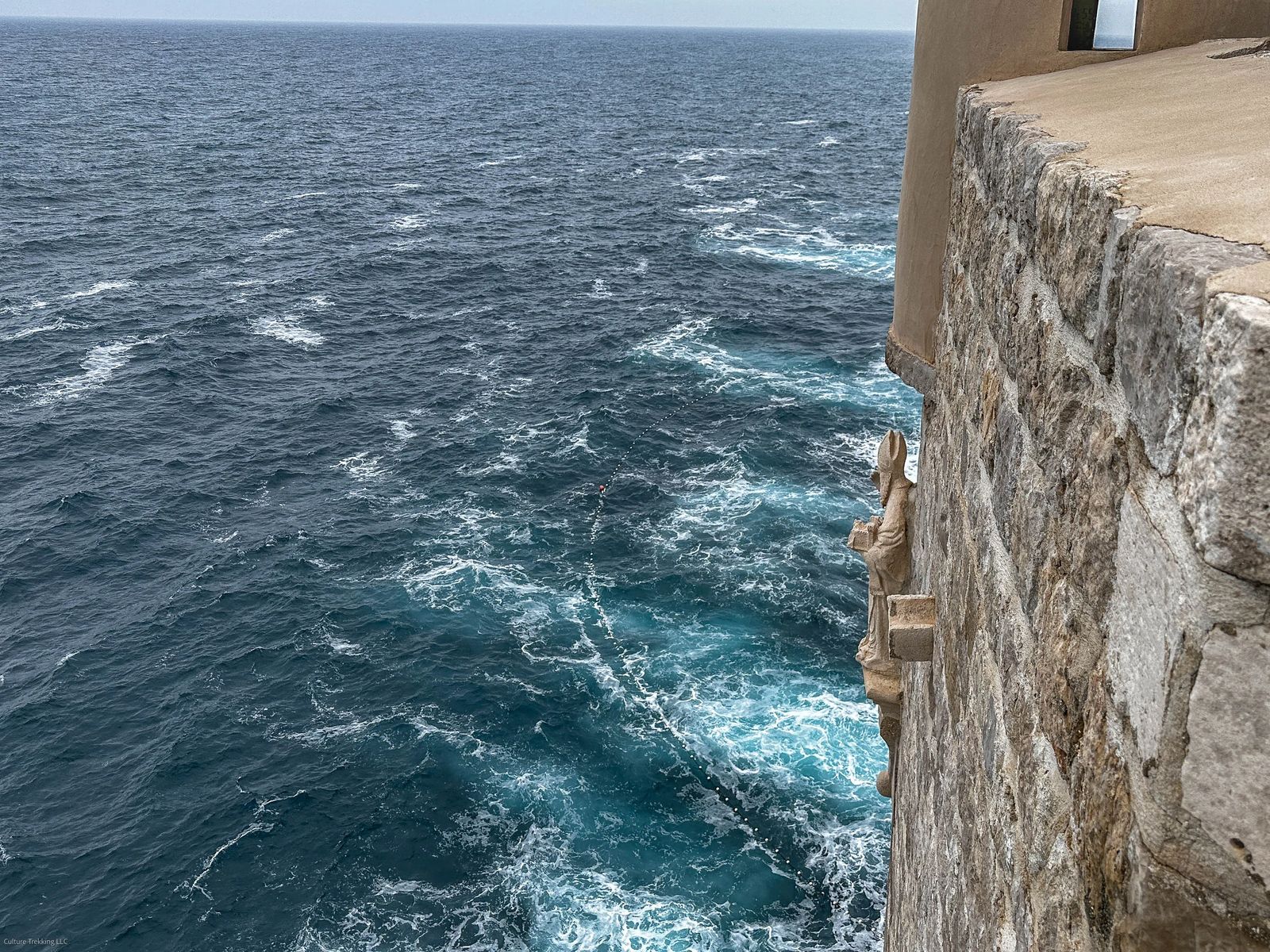
Fort St Margaret
This is the fort just past the Cafe Buza and the furthest point on the south side of the walls jutting into the ocean. Watch the boats come into and out of port, and see the Statue of St Blaise beneath the guard tower on the fort.
This Fort was built in a Renaissance style in the 16th century, it is a fantastic location for photos or a panoramic view of Old Town. You can see Lokrum Island from this fortress as well. It is one of the best spots to take a break on the walk along the wall because the rest of the wall, there is a sense of urgency to continue and move out of the way.

Fort Stephen
This is one of the youngest fortifications of the city walls, built in the 17th century. The earliest fortifications of the city began in the 7th century and the building of the walls lasted nearly 500 years.
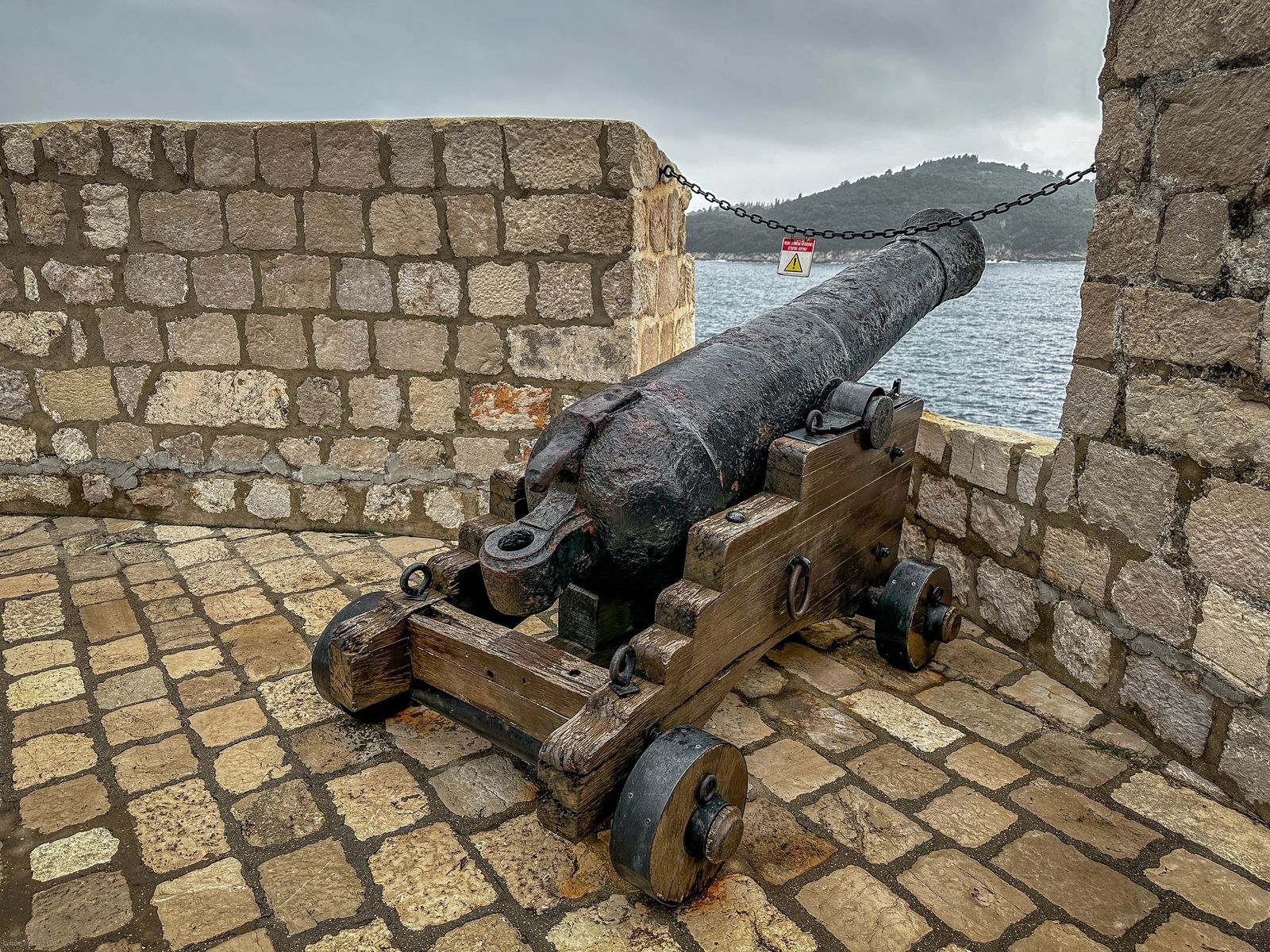
Fort Spasitelji
Also known as the Bastion of Stain Saviour is located on the southeast side of the walls. From here you can see Lokrum Island as well as Buza beach. Make sure to catch the cannon on this fort.
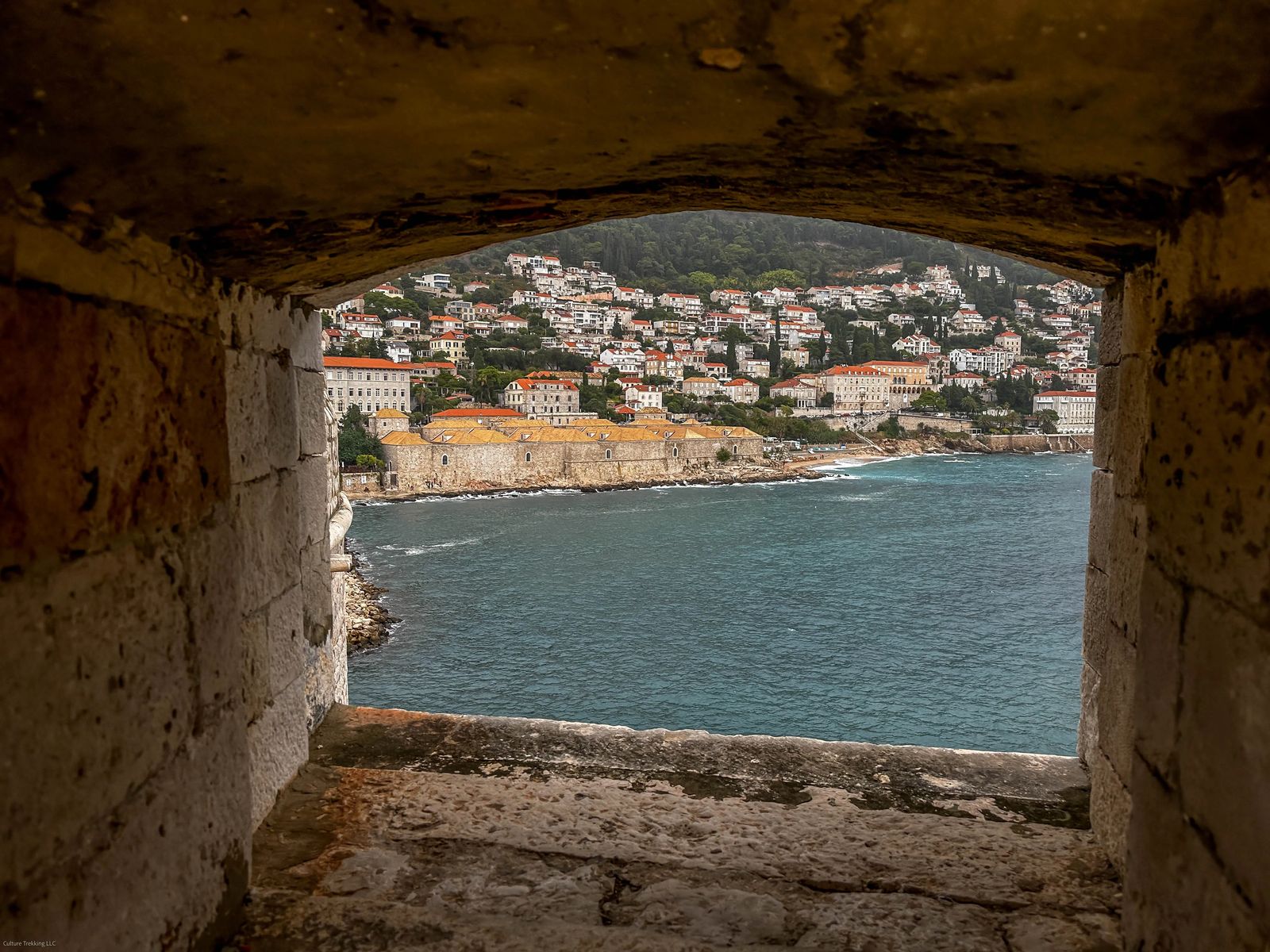
St John's Fortress AND Fort St Ivana (Mulo Tower)
This is on the Southeastern side of Dubrovnik and is very important as this is the fortress that guarded the port of Dubrovnik. Pirates were a common thing during medieval times and so these stalwart citizens were able to defend themselves in a very creative way.
When the warning call was sounded, a heavy metal chain from one side of the port was connected to the other side of the port (the Kase Jetty) and pulled taught. The ships, if not careful would run straight into it and be damaged or be prevented completely from entering the Port making them easier targets for cannons from the towers.
Today this fortress is a Maritime Museum and small aquarium that is well worth a look.

Rector's Palace
While the entrance to the Rector's Palace and Sponza Palace are separate from the city walk, I did want to mention that you will see the tops of these buildings on your walk along the walls.
Rector's Palace was once the seat of power of Ragusa (previous name of Dubrovnik) from the 14th century to 1808. Inside you would have found the lucrative gunpowder they would trade with other cities throughout the region. Conveniently located right by the East port, and also housed the armory, watch house, and prison.
Built in the Gothic style by Italian architects originally, after a gunpowder explosion it was repaired in a Renaissance & Baroque style. During its time in use, the Rector (serving on a one-month term at a time) wasn't allowed to leave without the senate's permission.
It is now the Cultural History Museum, which shows restored rooms of the Rector, as well as the coats of arms of the city, coins, and the history of the Ragusan people.
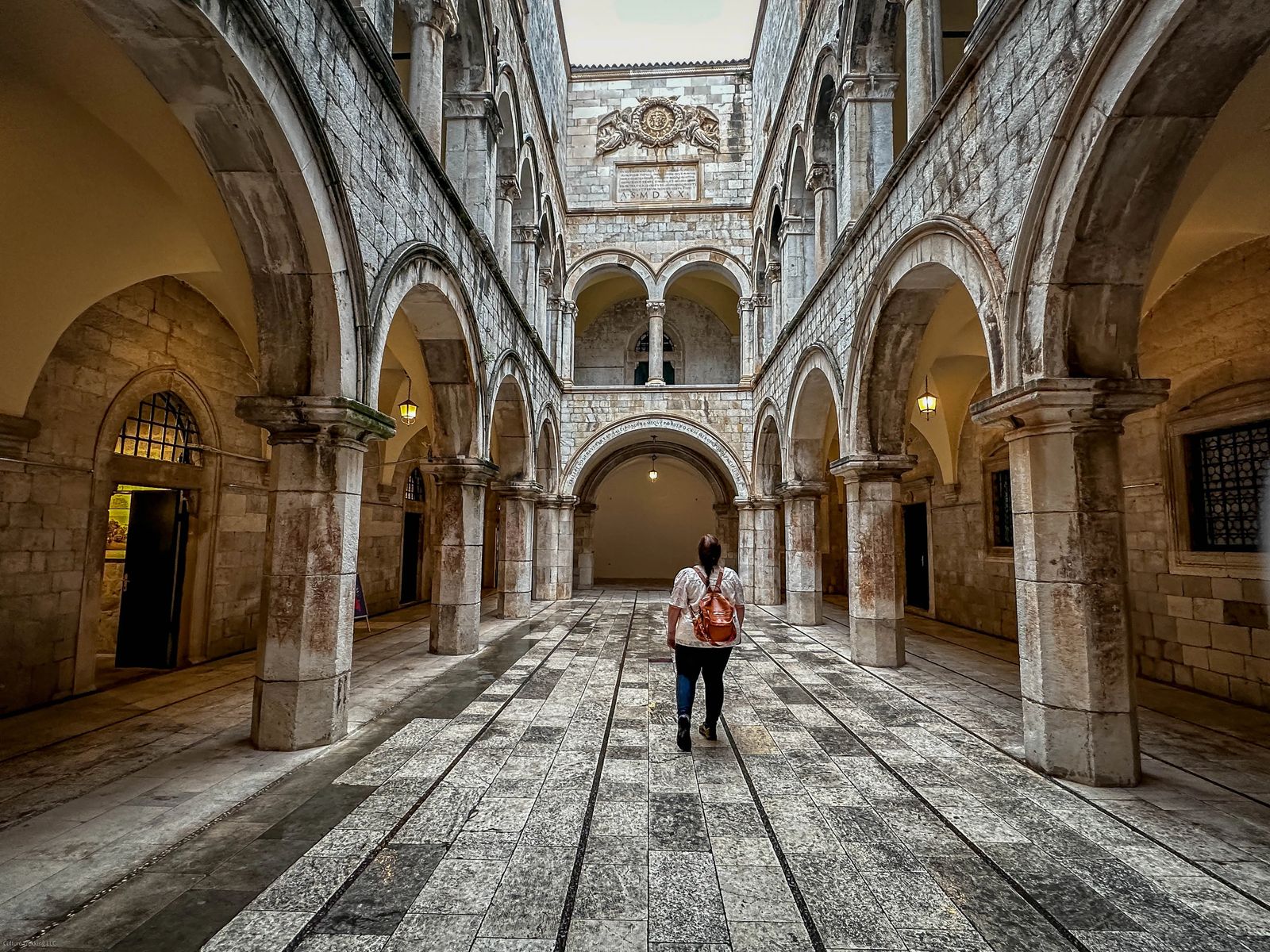
Sponza Palace
Sponza Palace is a 16th-century palace in which the roof was used as a collecting mechanism for the city's cisterns. Sponza is derived from the word spongia, literally meaning where the rainwater collects. Inside will look quite familiar to Game of Thrones fans, as it was commonly used in the Game of Thrones series as an interior shot within the Red Keep.
Beyond Game of Thrones, the actual history is that it is built with a mix of Gothic and Renaissance styles. It served as a place of public functions and gatherings and was a spot for the customs office, for the many ships that would visit the East Port. It was also used as a customs office, bonded warehouse, mint, armory, treasury, bank, and school. It was the cultural center of the republic of Ragusa, and once held a literary academic school. Today it holds the city archives that date back to the 12th century, with the earliest from the 10th century. There are a total of 7,000 volumes of manuscripts.
Shockingly Sponza Palace survived the 1667 earthquake without damage. You can still see an inscription on the walls that reads:
- Fallere nostra vetant et falli pondera. Meque pondero cum merces ponderat ipse deus.
- "Our weights do not permit cheating. When I measure goods, God measures with me."
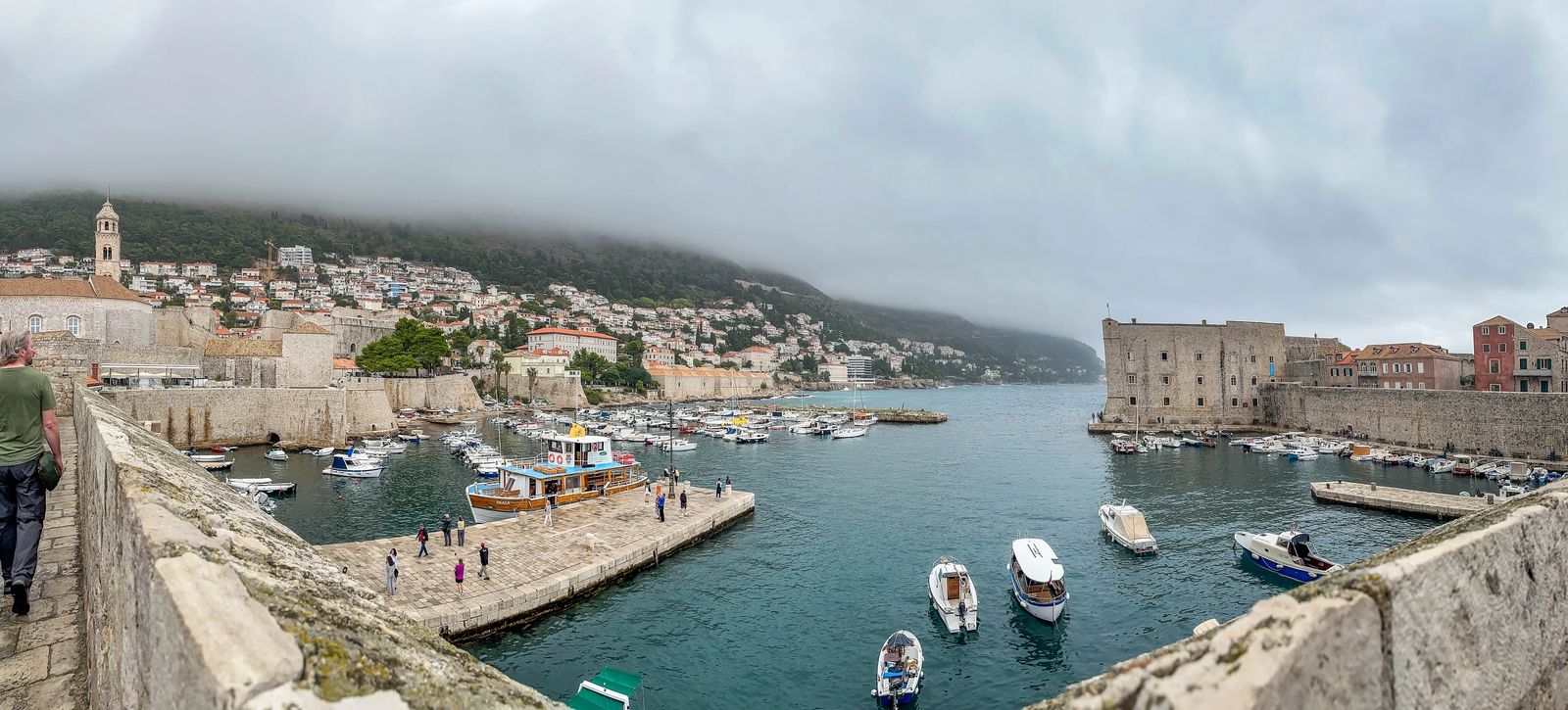
Kula Luda (Sveta Luka)
This is one of the two large bastions in the city walls of Dubrovnik that defended the East port of Dubrovnik. This is where you will also find one of the Michelin Star restaurants, 360 Dubrovnik. Make sure to check out my article on eating at my first Michelin Star restaurant here in Dubrovnik.

Ploča Gate
The outer gate was built in 1628 by Mihajlo Hranjac, with the stone bridge to Revlin Fortress was built in the 15th century by Paskoje Miličević. Make sure to spot the statue of Saint Blaise here as well.
For Game of Thrones fans, this is where Cerci entered the gates to be greeted by Qybrun after her walk of shame.
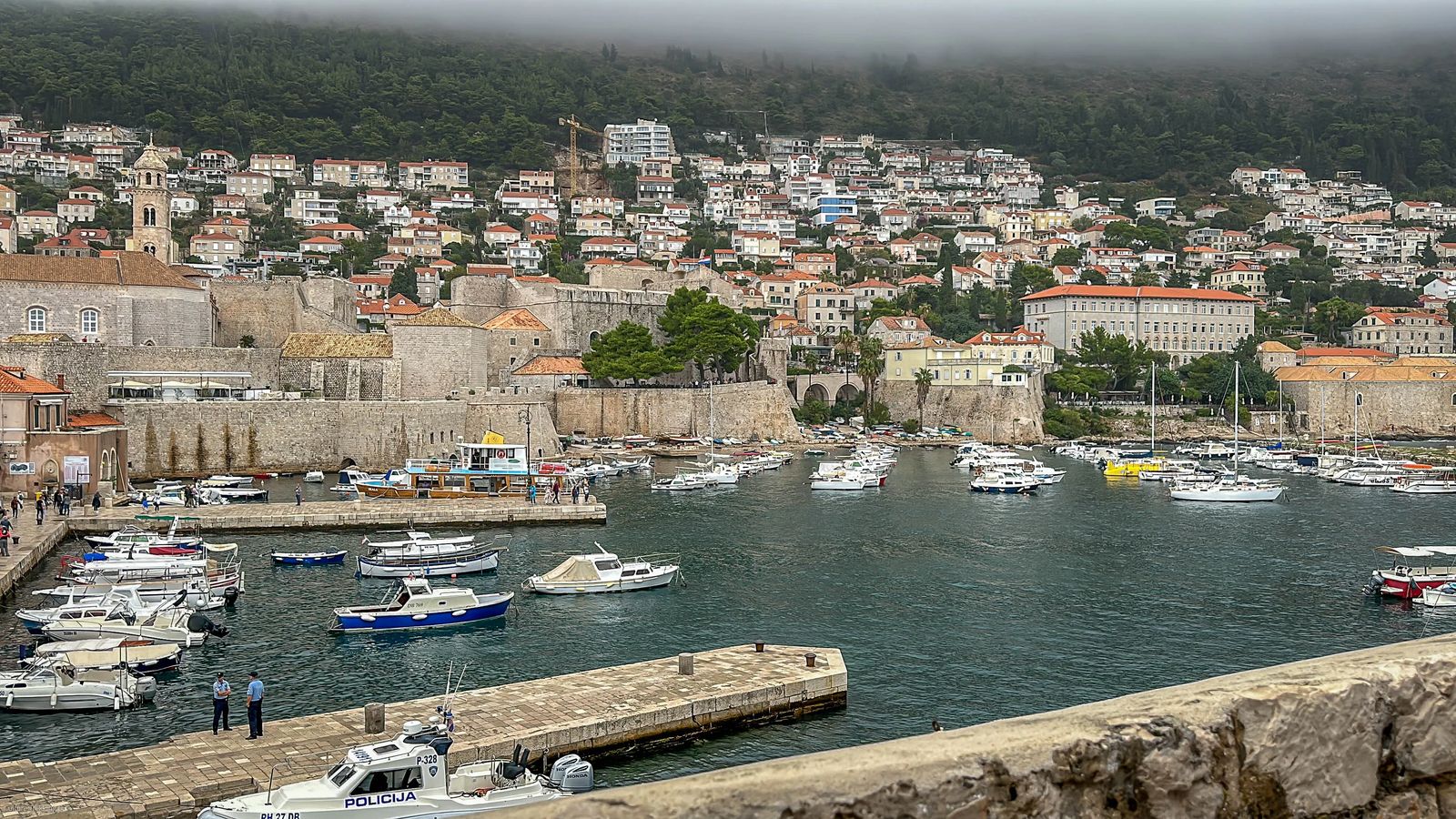
Revlin Fortress
You can see Revlin Fortress from Sveta Jokov where this fortress took 11 years to build and miraculously wasn't damaged in the 1667 earthquake. There are three entrances to the fortress, and it protects the Old Port on the East side of Dubrovnik. Today it is a nightclub and used for the stage for the Summer Festival as well.
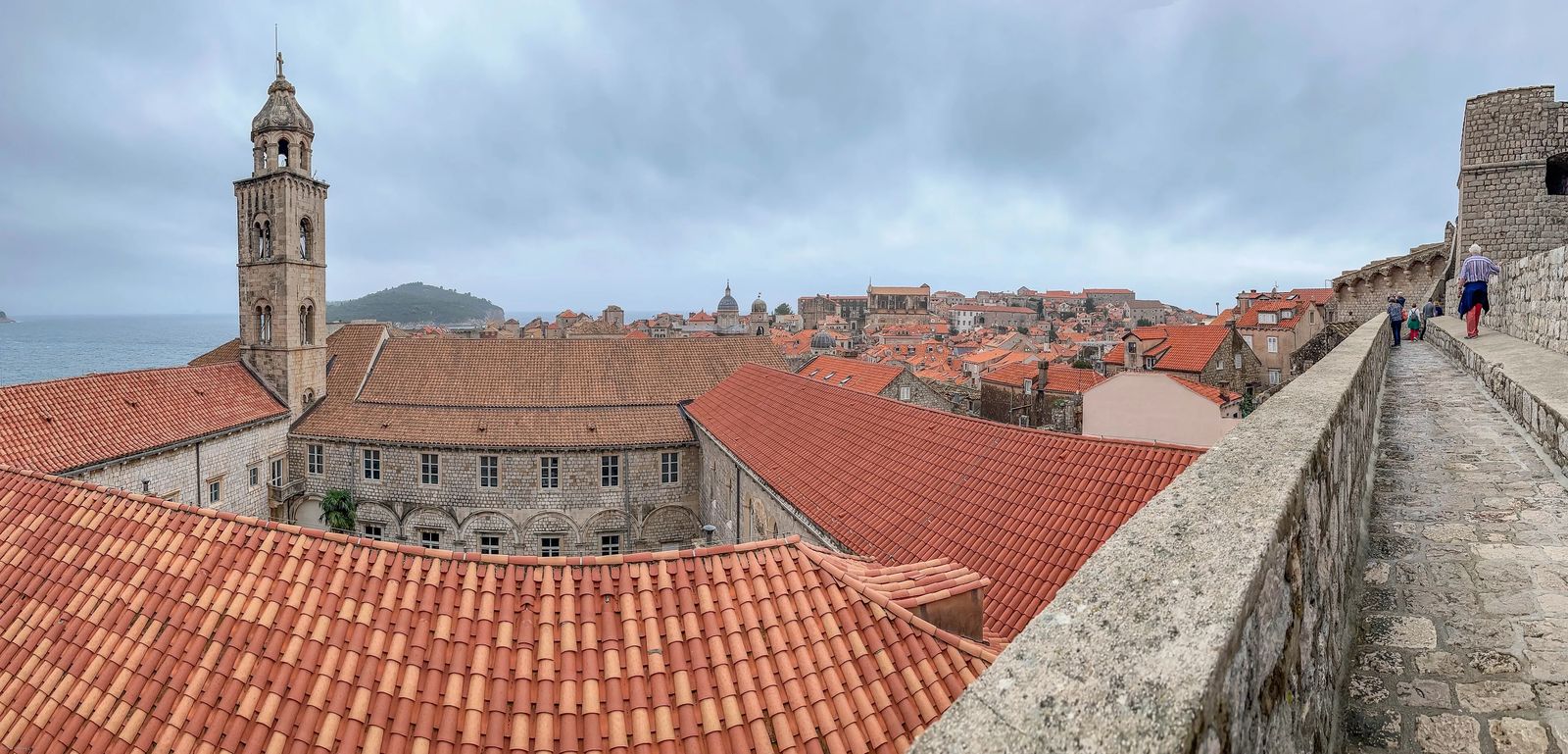
Dominican Monastery
From Sveta Jokov the Northeast tower of the city walls, you will see the tower that belongs to the Dominican Monastery. This Monastery was used during the Yugoslavian war to protect the citizens of Dubrovnik as well as provided water during the 7-month siege through a small well.
There are three main areas in the Monastery, the Baroque Church was built in the 17th century. The Pharmacy was built in 1317 and is the 3rd oldest pharmacy in the world, and the library with its tower. Much of the Monastery was destroyed in the earthquake of 1667.
One of the few elements that survived was the doorway on the south side of the Monastery. Above the door, you will find the Virgin Mary cradling the crucified Christ is called a Pietà, carved by Lenoard and Petar Petrović in 1499.
The original Monastery was built outside the city walls and then moved inside the city walls for greater protection. The library has over 1200 manuscripts some dating back to the 10th century
The church has 2 cloisters, one built in the Renaissance style and the other in the Romanesque and Gothic style with 120 columns inside.

Buže Gate
Buže Gate means 'the hole', the gate itself isn't much to look at. It is the North entrance into the city, and there is a small parking lot just next to it. Be warned the entrance does have a lot of steps to get into the city though. This is a newer gate as it was formed in the wall when the Austro-Hungarian Empire ruled in the 1900s.
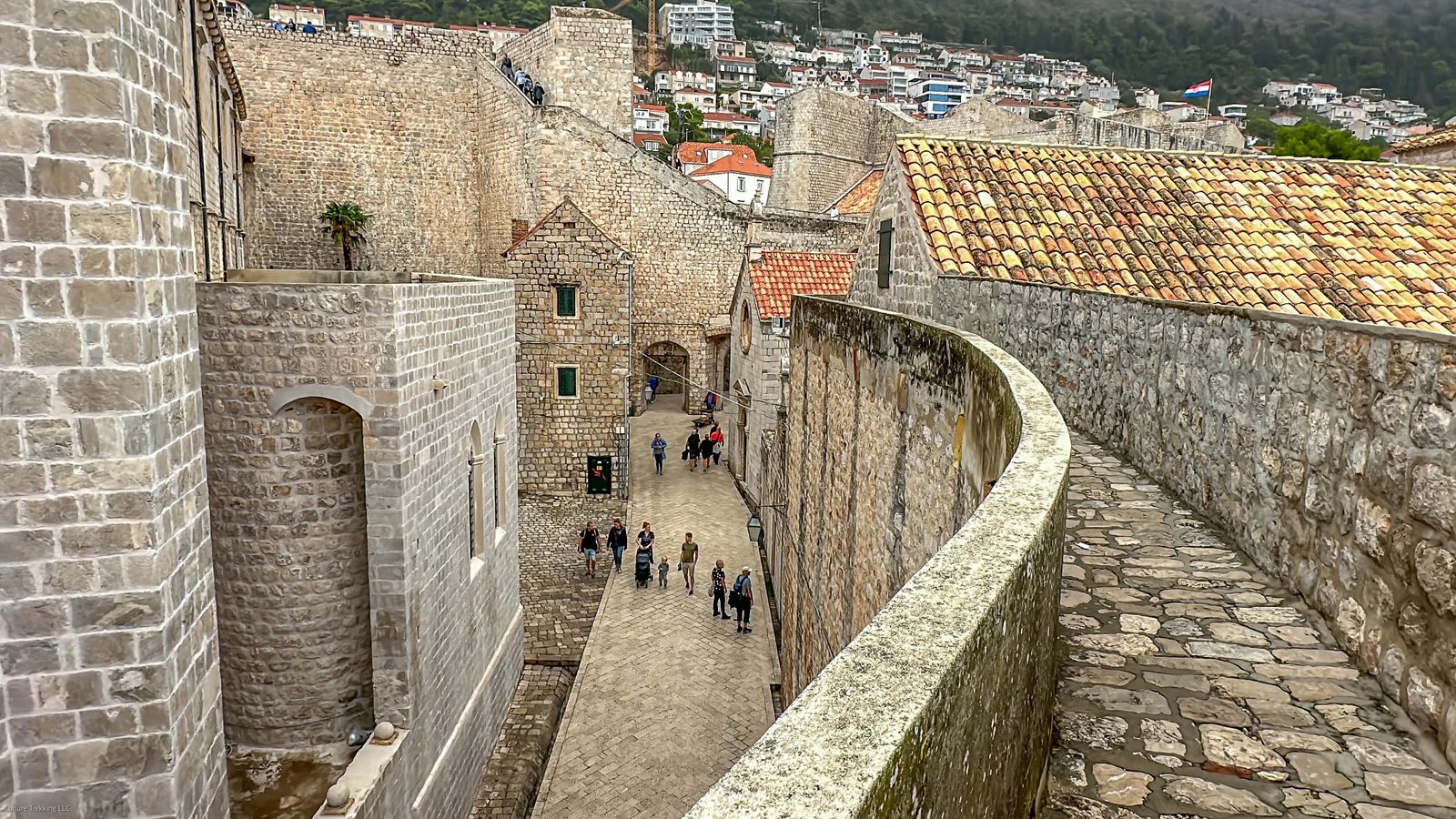
The North Wall
From Buže Gate you walk past Sveta Vld, Sveta Lucija, and Saint Barbara tower before arriving at Minceta Tower. The North wall is the tallest part of the wall as it was responsible for defending itself against the Slavs. The Minceta Tower was once a lookout tower that rose 1,400 feet (437m), which is at the westernmost end of the North wall.
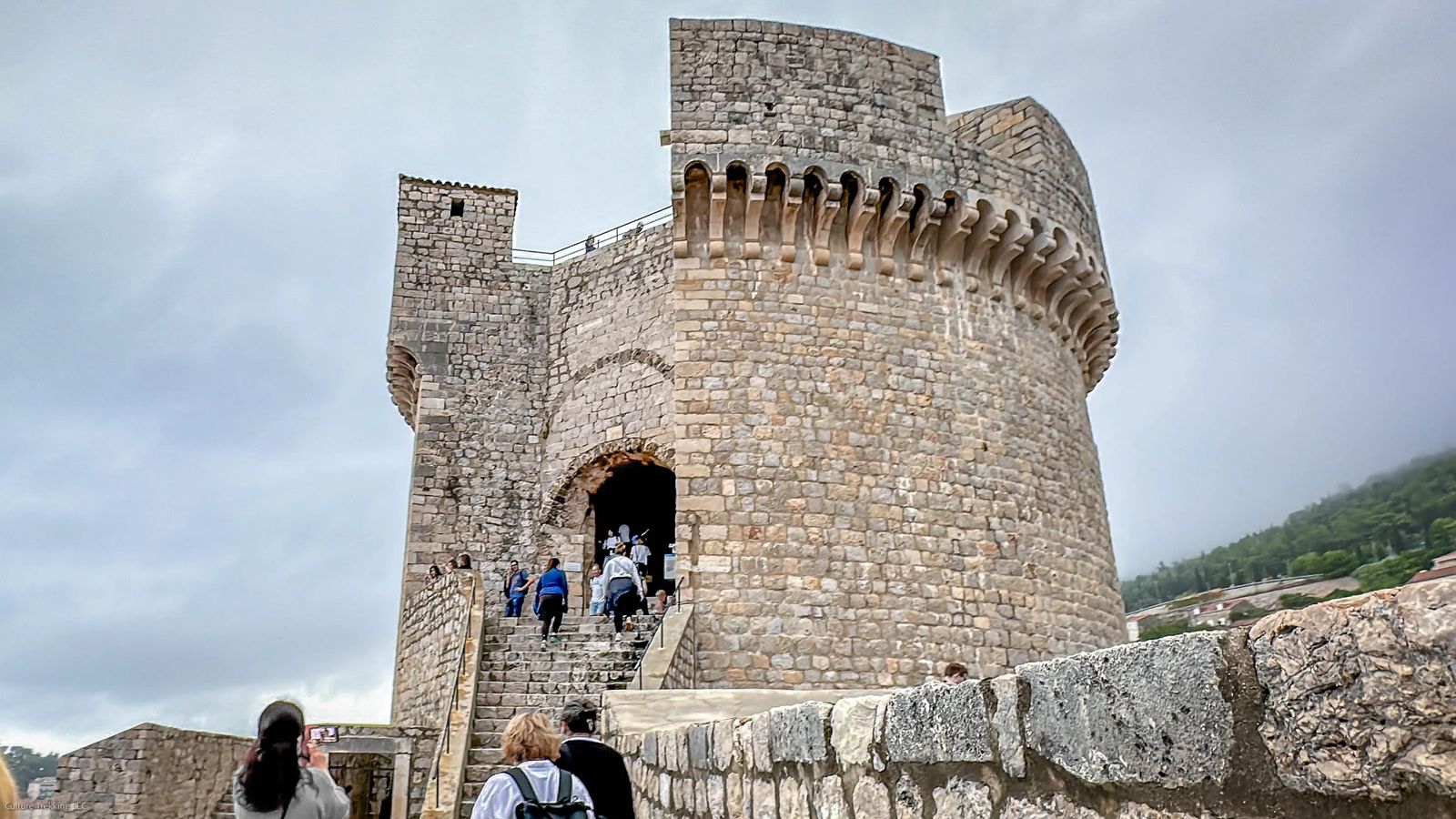
Minceta Tower
Minceta tower was built just after Pile Gate and Puncijela Tower (1305), built in 1319 by a local builder Nicifor Ranjina Minceta tower was named after the Mincetic family who owned the land that the tower was built on.
To get to the top, there are 750 steps you will need to climb, but it provides the BEST views of the city of Dubrovnik and is also the same view you see in the Game of Thrones series when looking over the town.
If you come down from the wall into the town portion, there is a wooden door with an entrance into the Ancient Foundry Museum. Head towards the basketball court, there is an unassuming green door you can enter and see the excavated area where you can learn about the secretive and powerful firepower that defended Dubrovnik for centuries. Inside you will learn about the economic and metallurgic powerhouse that Dubrovnik was.
Inside you will see a 15th-century forge, the mold-casting section, water basins, a sedimentation channel, and a sand depository. This is where gunpowder was prepared, bronze was cast, and church bells were made. You also see how cannons were made, as well as bullets. This metal foundry was used until the 17th century when it was buried during the earthquake. It costs about 30 Kuna to get in and is separate from the City Walls tour.
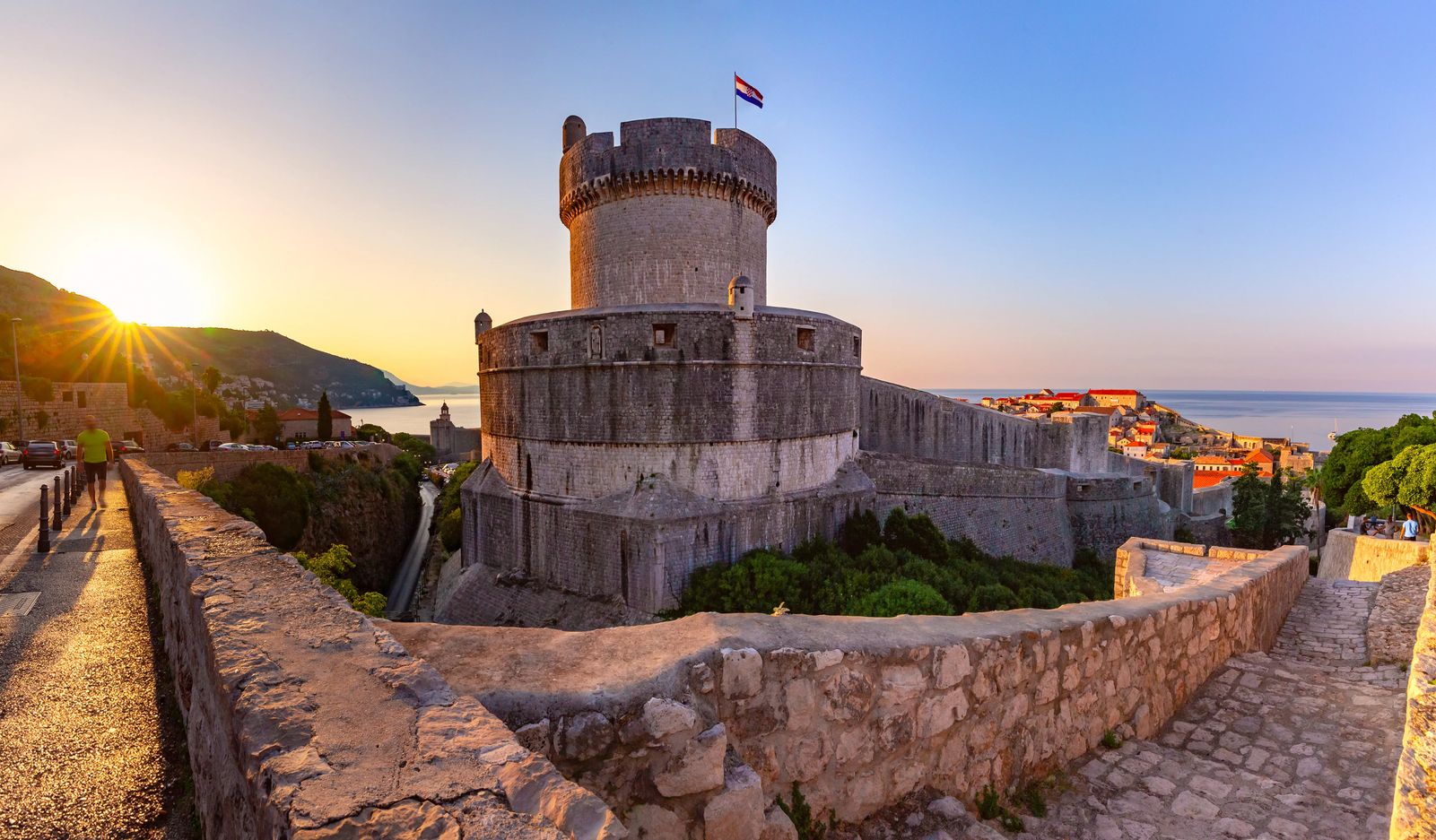
My Takeaway Of Walking Dubrovnik City Walls
While the Dubrovnik City Walls were made popular by the TV series Game of Thrones, the history and ingenuity of the defense strategies, and the sheer grit of the people that live here is what makes it truly special. If I was to go back to the city walls, I would DEFINITELY visit the walls twice, once for just walking the walls, and the second time to snorkel off the walls and eat at Buza Cafe at sunset.
I hope you found this article helpful and if you have any questions feel free to leave them down below, or anything you would add to the article. Have wonderful adventures in Dubrovnik when you visit.
Guided Tours of Dubrovnik City Walls
My Drawing Of Dubrovnik City Walls
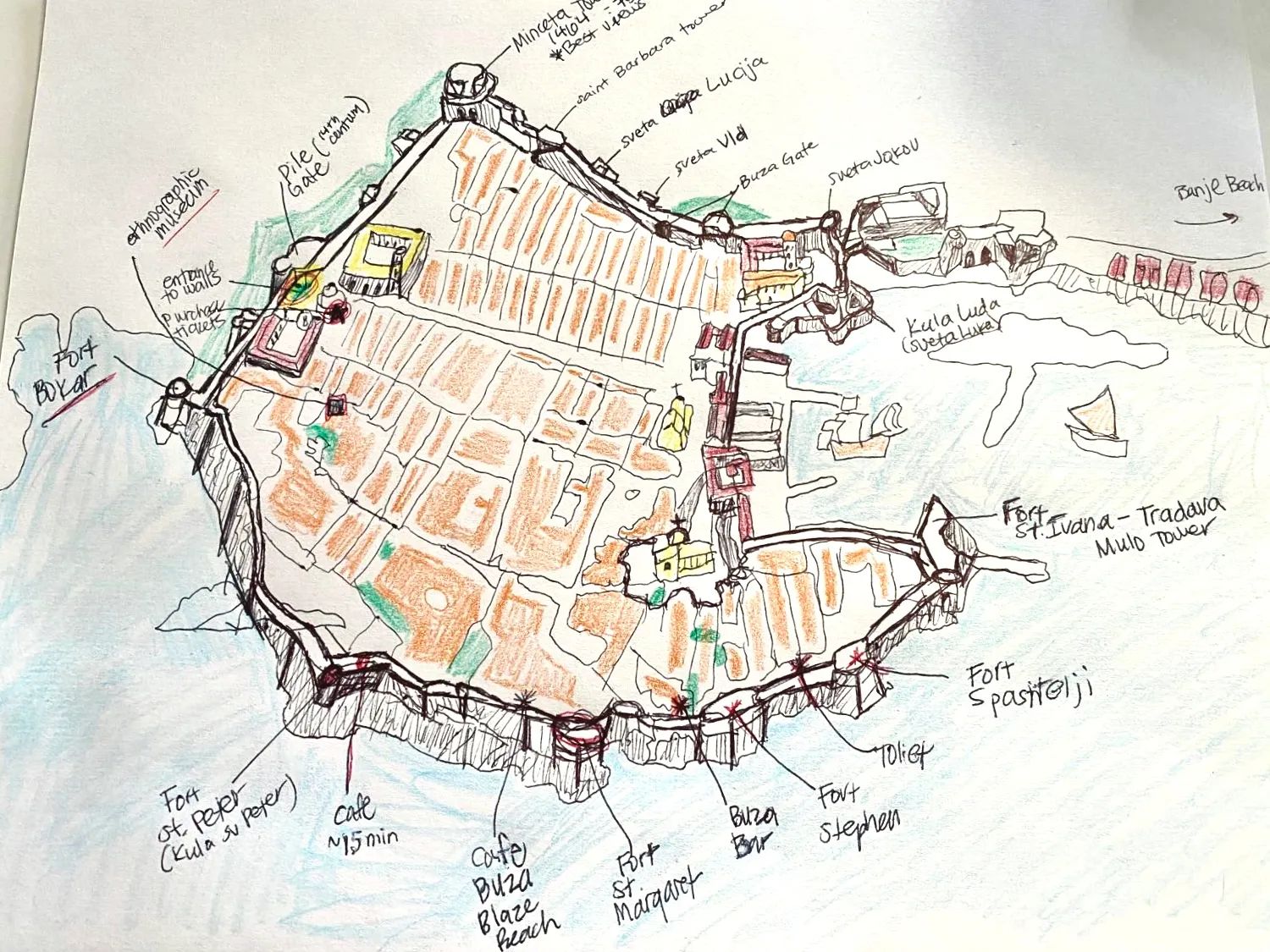
Like it? Pin it for later! Sharing is caring ;)
.jpg?fit=outside&w=1600&h=2399)
.jpg?fit=outside&w=1600&h=2399)
.jpg?fit=outside&w=1600&h=2399)
.jpg?fit=outside&w=1600&h=2399)
Where to stay in Dubrovnik
Latest Articles On Culture Trekking


Welcome to Culture Trekking!
My name is Janiel, a leader in the travel industry with over 20+ years of experience with international travel. I specialize in solo female travel, cultural connections, sustainable adventures, food and history to help make your travel experiences fun, meaningful, and delicious. My experience in travel, and my personal story have allowed me to get published in Fodor's Travel, Atlas Obscura, Metro.co.uk, Trip Advisor, and multiple Podcast interviews. You can find me on pretty much every social media channel YouTube, Instagram, Twitter, Facebook, Pinterest, TikTok. To read more about me and my story click here. If you are a brand and would like to work with me, click here.

















